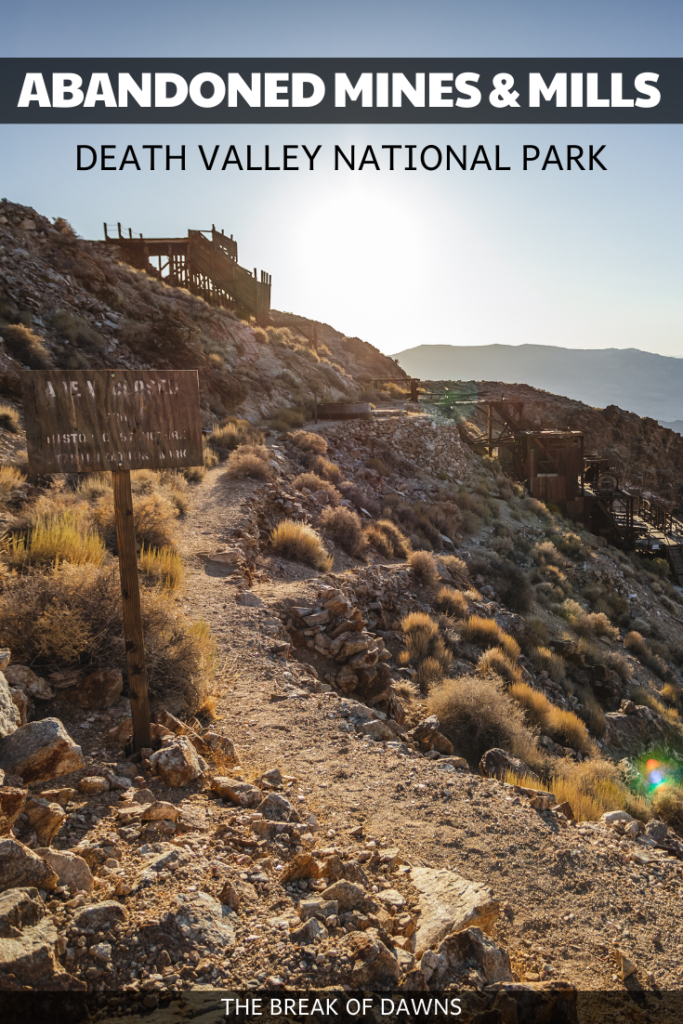
Steel doors to the mines in the side of mountains sit ajar as if the last worker forgot to close it. Crumbled walls of century-old ghost towns stand awkwardly in the contrasting desert around it. Mine carts, once used time and time again for transporting ore, sit immobile on the broken tracks. These are the mine and mill ruins of Death Valley.
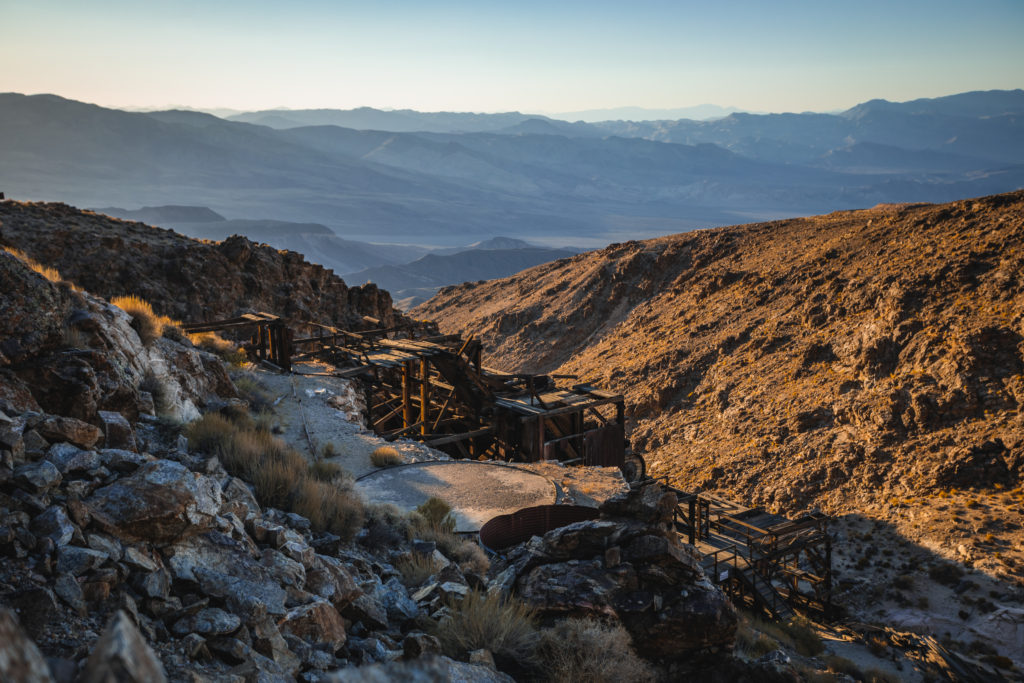
Map of Mine and Mill Ruins of Death Valley
With 3.4 million acres in Death Valley National Park, it’s hard to know exactly where to find the worthy spots. Below is a map of 8 different mill and mine ruins in Death Valley. Some have buildings still standing, some feature only piles of rubble but each have a story to tell.
Being the largest National Park in the lower 48, Death Valley is extremely massive. You probably won’t access every ruins in one visit as driving from one location to another could take hours. It’s important to note that many roads require a high-clearance vehicle and/or 4-wheel drive. I’ll mention that in my description of each below.
Be sure to check the NPS website here for any current alerts and info on road conditions!
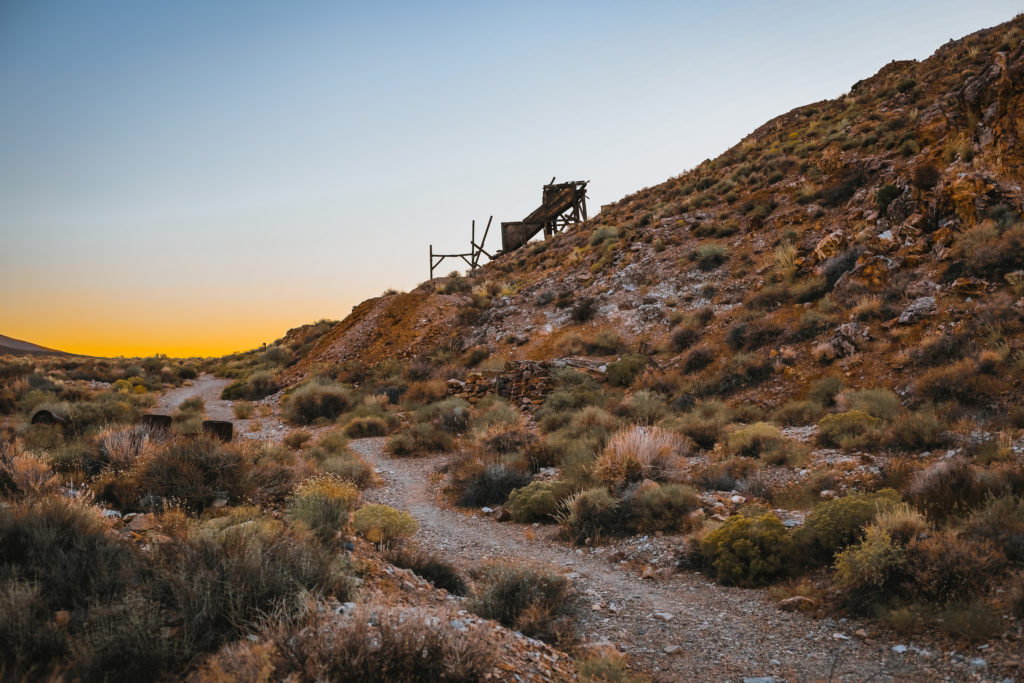
Mine and Mill Ruins of Death Valley
Experiencing over 140 years of boom and bust mining operations, there are nearly 18,000 mine and mill structures in Death Valley. Factors like weather, flash floods and vandalism have reduced that number immensely.
If you plan on entering the mines (if open, you’re more than welcome to explore!), take necessary precautions to ensure your safety. Remember that animals could be seeking shelter in the darkness and areas could be unstable. Bring along your hiking essentials like water and lighting equipment.
Check out the 8 worthy mine and mill ruins to visit in Death Valley:
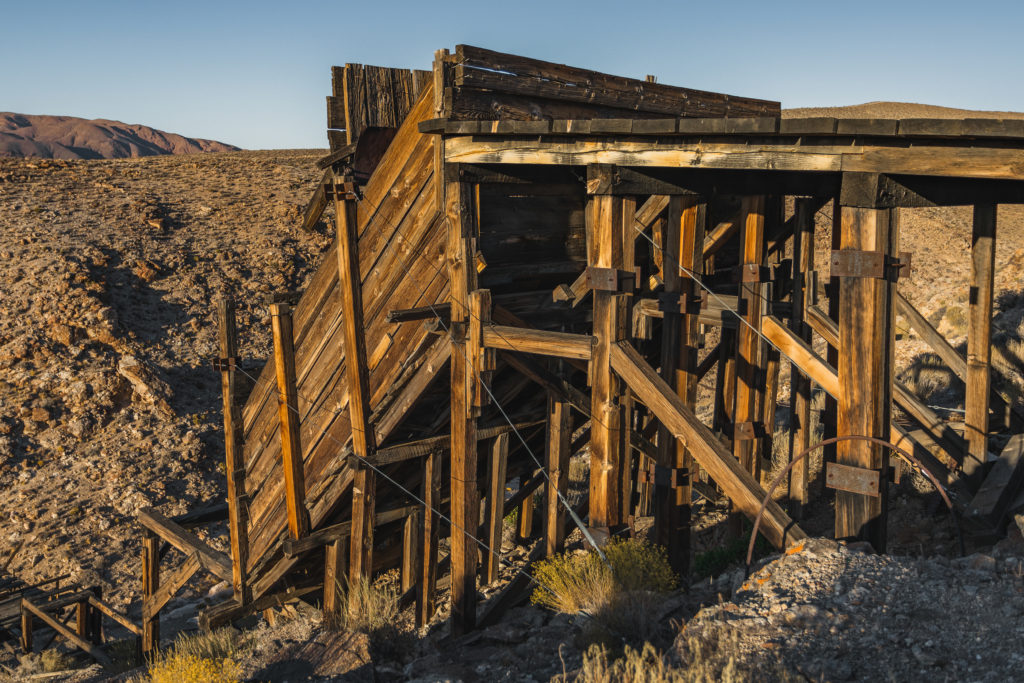
Keane Wonder Mine Ruins
The most popular mine ruins site for tourists in Death Valley is the Keane Wonder Mine. Beginning operations in 1907, the mountain became scarce of resources nearly 5 years later. This led to a major decline in profits. Attempts to mine ore in the Keane Wonder Mine continued until 1942. This mine was one of the first of its kind to feature an aerial tramway (still standing today), which transported up to 70 tons of gold ore a day.
Visiting Today: Hike the mile-long trail 1500 feet in elevation for a closer look at the mine. Located off of the Beatty Cutoff Road 5.7 miles north from Highway 190, find the unpaved 2.8 mile road to the Keane Wonder Mine. A high clearance vehicle with thick tires is recommended.
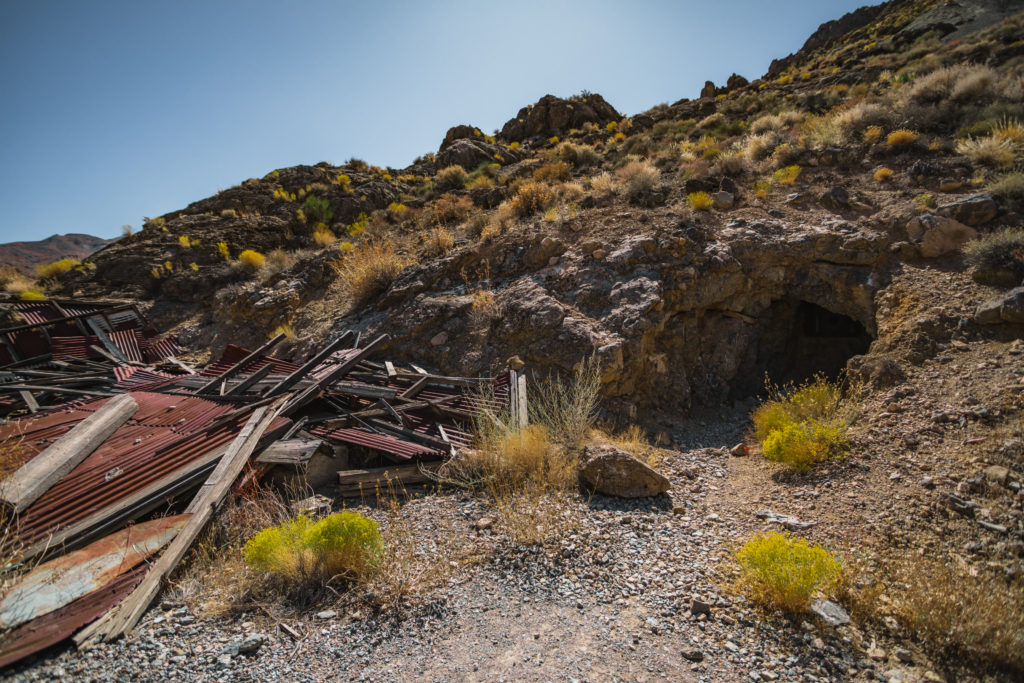
Inyo Mine Ruins
The Inyo Mine was the earliest discovery of gold ore on the west side of the Funeral Mountains in 1905. The mine closed in 1912 when financing for an ore processing mill failed. Over 20 years later, another company leased out the claims to the tunnels and also built the necessary equipment. While the next couple of years brought some strikes of gold, the mine closed for good in 1941.
Visiting Today: There are a number of old mine shafts and tunnels to explore at the Inyo Mine. Find it located off of Echo Canyon Road, an intensely-rugged backcountry route. You will definitely need a high clearance vehicle and sometimes 4-wheel drive to reach the ruins.
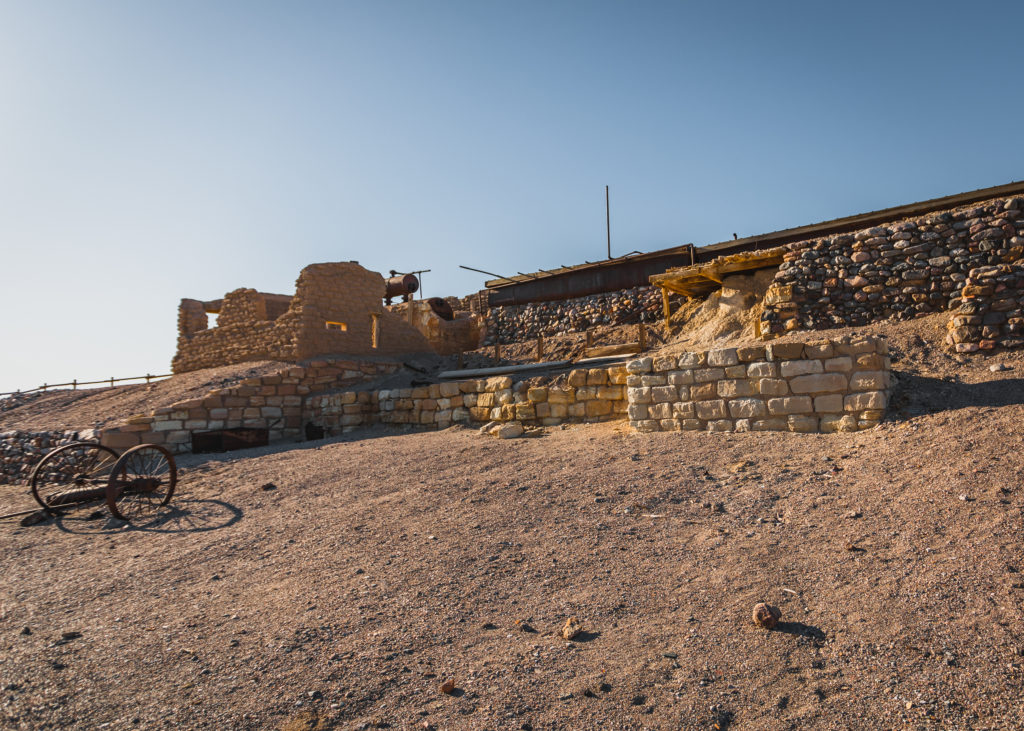
Harmony Borax Works Ruins
If you’re unfamiliar with the mining history in Death Valley, the initial mineral that brought some sort of civilization to the area was borax. First discovered near Furnace Creek in 1881, the Harmony Borax Works plant was built 3 years later to process ore.
According to the NPS, at the peak of its operation, Harmony Borax Works had more than 40 employees producing 3 tons of borax a day. The hardest part of all mining operations in this deserted land was how to transport it. This is where the famous “Twenty-Mule Team” came in, allowing Harmony to transport double the ore.
Want to visit some ghost towns in Death Valley? Learn more about that here!
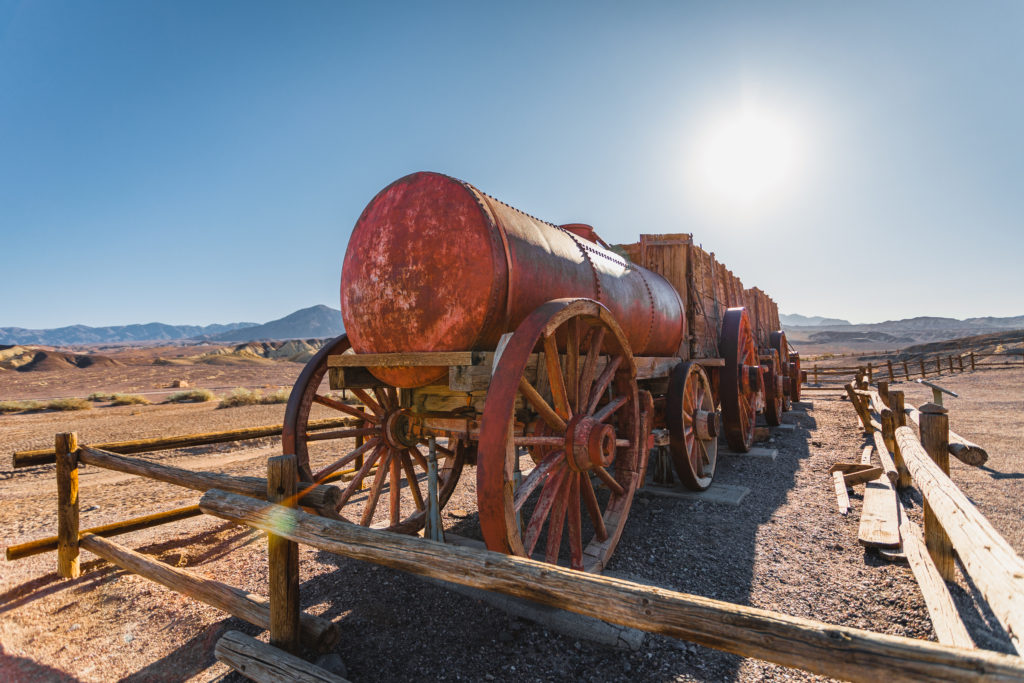
After only 5 years in business, the plant closed in 1888 when the owner went bankrupt. Harmony Borax Works was added to the National Register of Historic Places in 1974.
Visiting Today: An interpretive trail for the Harmony Borax Works ruins is located about 2 miles north of the Furnace Creek visitor center on CA-190. The paved parking area is on the west side of the road.
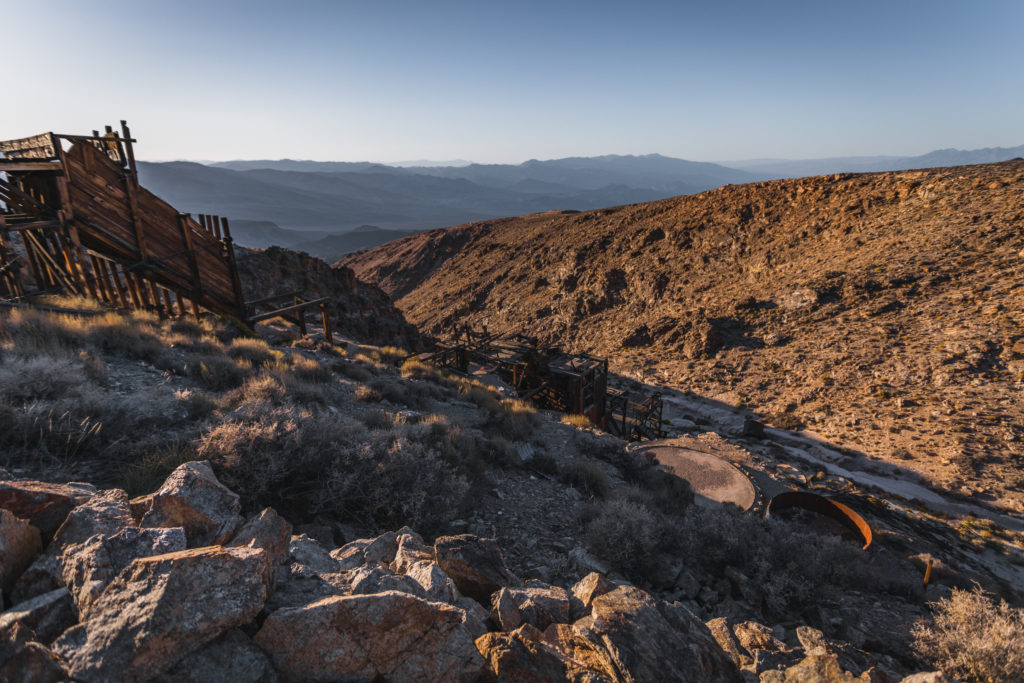
Skidoo
Two men on their way to the newly-discovered gold strike in the settlement of Harrisburg found gold themselves in 1906. Establishing the townsite of Skidoo, it reached a population of nearly 700. Skidoo became famous for being the place where the only hanging in Death Valley took place. That happened when the townspeople killed a local outlaw who killed the owner of a store after trying to rob the bank. Newspapers from all over came to cover the story.
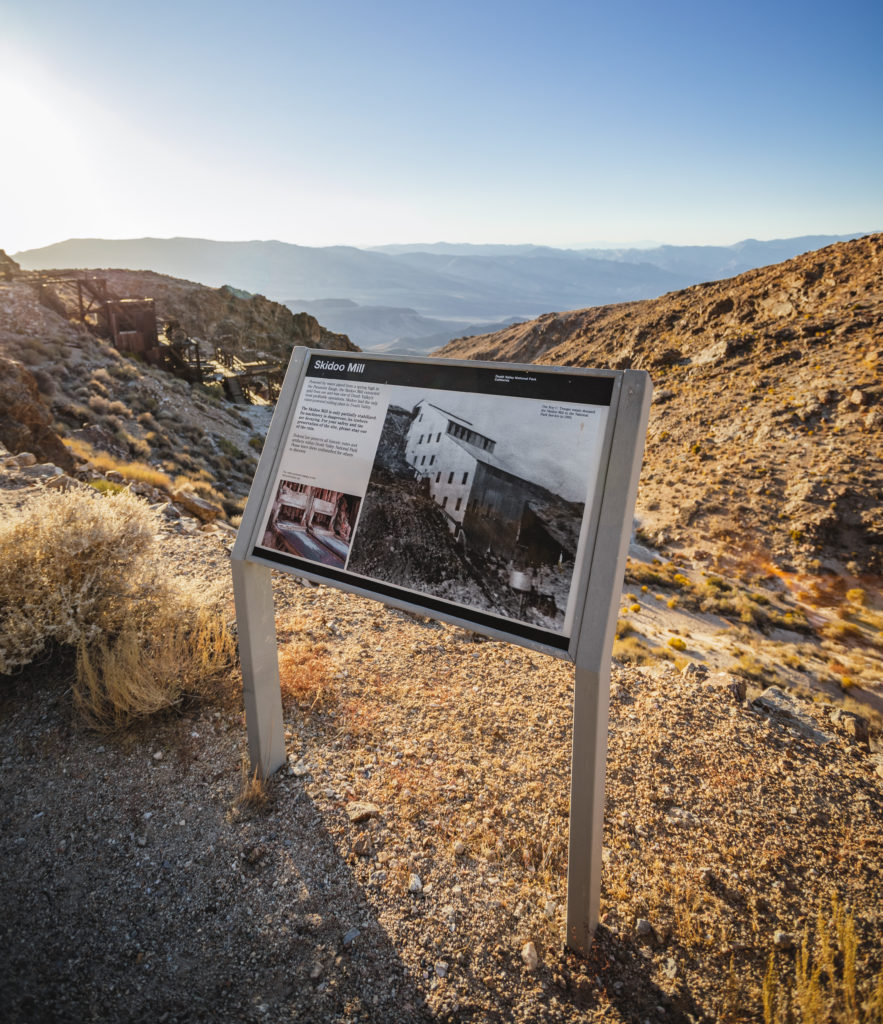
Visiting Today: While accessing Skidoo is not an easy task, it’s totally worth it for the views. Located at the top of the mountains in the southwest area of Death Valley, visit it today to explore the mines. You can also see the remnants of the mill, most of which is still intact. Skidoo is located on a one-way unpaved road off of Emigrant Canyon. You must have a high-clearance vehicle for this drive and well-treaded tires.
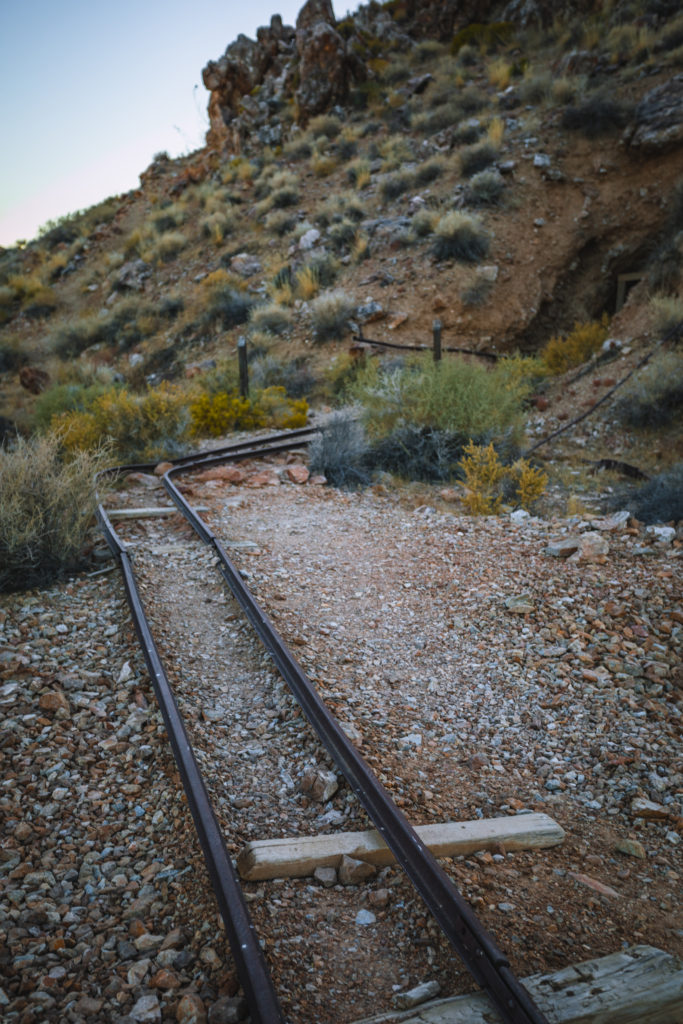
Eureka Mine Ruins
Pete Aguereberry is a legend of Death Valley with a big influence in discovering and mining the central-west areas of the park. While heading to another town south of Wildrose, Pete and another man named Shorty found a ledge full of gold. From here they established the Harrisburg ghost town and opened the Eureka gold mine. Pete obtained all of the claims to the mine in 1909 and worked it himself until his health began failing him in the 1930s.
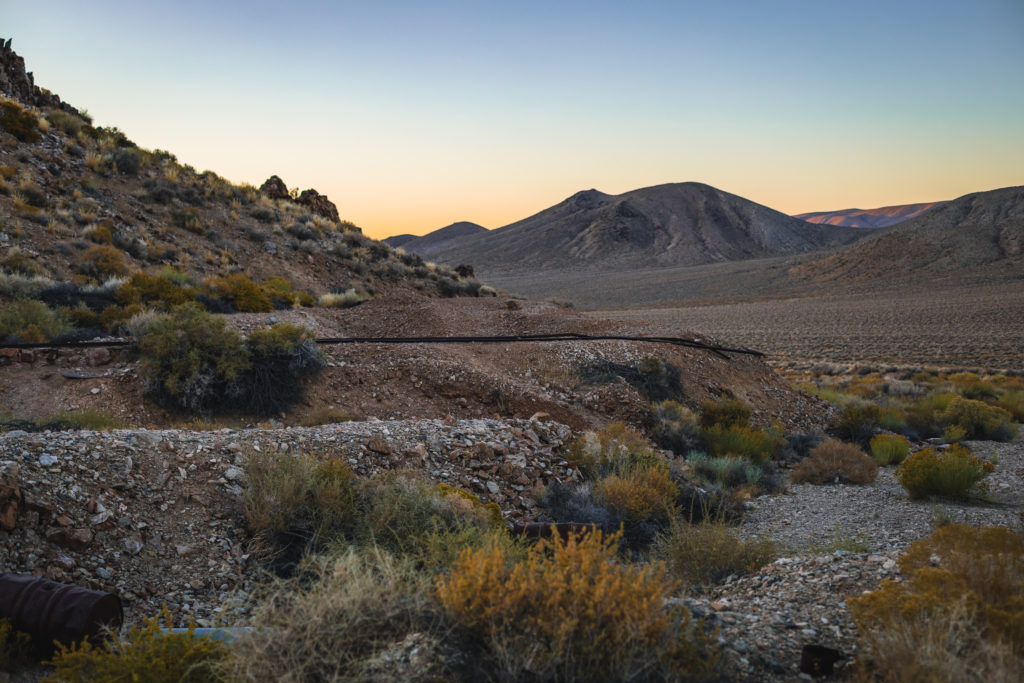
Visiting Today: The Eureka Mine is one of the coolest I discovered in Death Valley. It’s complete with broken mine cart tracks that lead directly into the mine itself. Access it via a short unpaved road off of Emigrant Canyon Road, 14 miles south of Emigrant campground.
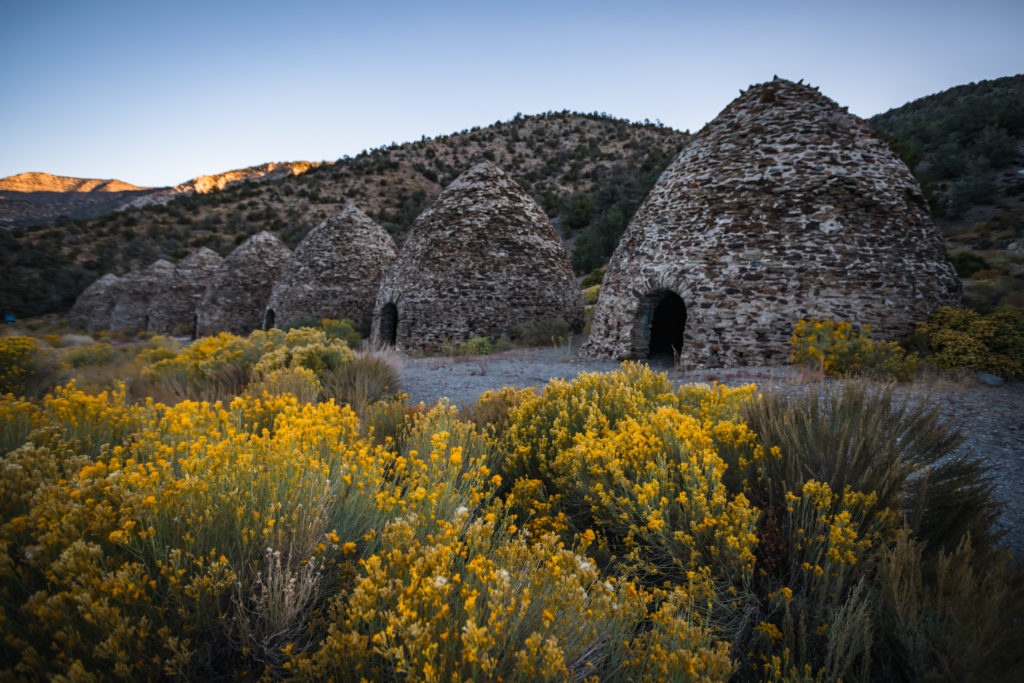
Charcoal Kilns
Although most tourists coming to Death Valley ignore the west side, there’s one piece of history here that should be discovered. The Charcoal Kilns are considered to be the best surviving examples of their kind in the States. Constructed in 1877, these beehive-esque structures are so well-intact, you’d think they were built just a few years ago.
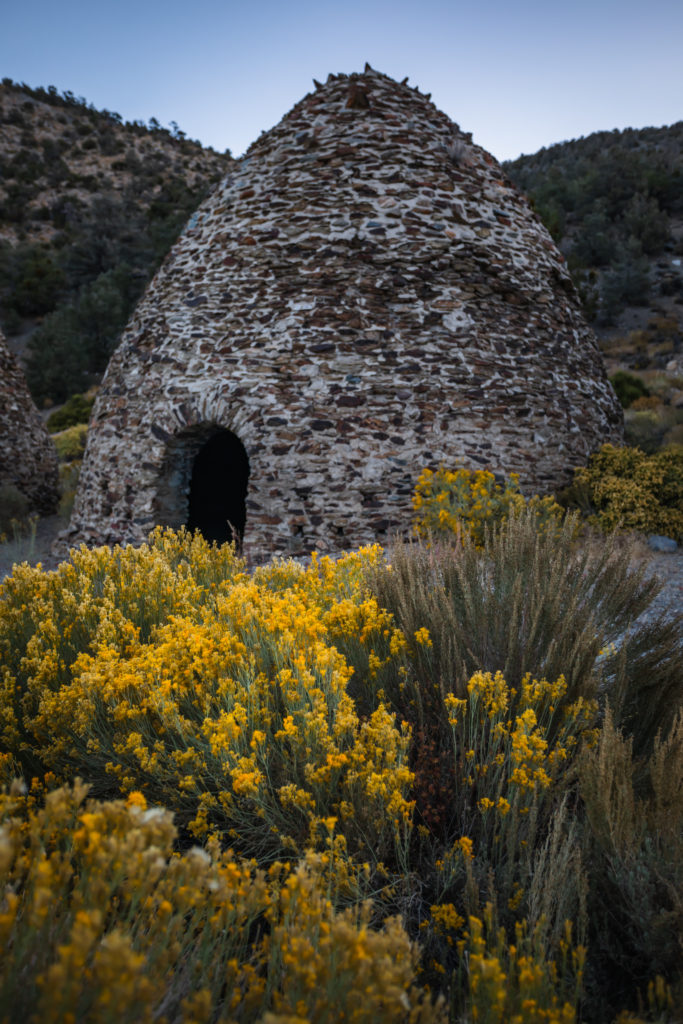
The real confusion behind the Charcoal Kilns are why they were built in this location. According to records, they were used as a source of fuel for two smelters mining lead and silver, a whole 25 miles away through the mountains and across the valley. Evidence shows that the kilns weren’t used more than 2 years after their construction, assuming fuel sources became easier to locate where it was needed.
Visiting Today: Find the Charcoal Kilns off of Emigrant Canyon Road, around 28 miles south of CA-190. The last 2 miles to the kilns is gravel but a normal vehicle can handle it.

Eagle Borax Works Ruins
While Harmony Borax is more notorious, the Eagle Borax Works in the southern area of Death Valley was the first borax refinery in 1882. In its first 15 months of operations, it produced nearly 130 tons of borax. Along with inefficient day-to-day scheduling, financial issues and the owner’s suicide, the refinery closed in 1884.
Visiting Today: While there aren’t many things that exist in this spot today, the nearby borax sweepings piled into a large area are the hints that the refinery existed. To reach the Eagle Borax Works ruins, head south on Badwater Road, taking a right on to West Side Road. Travel about 13 miles south until you reach the marker.
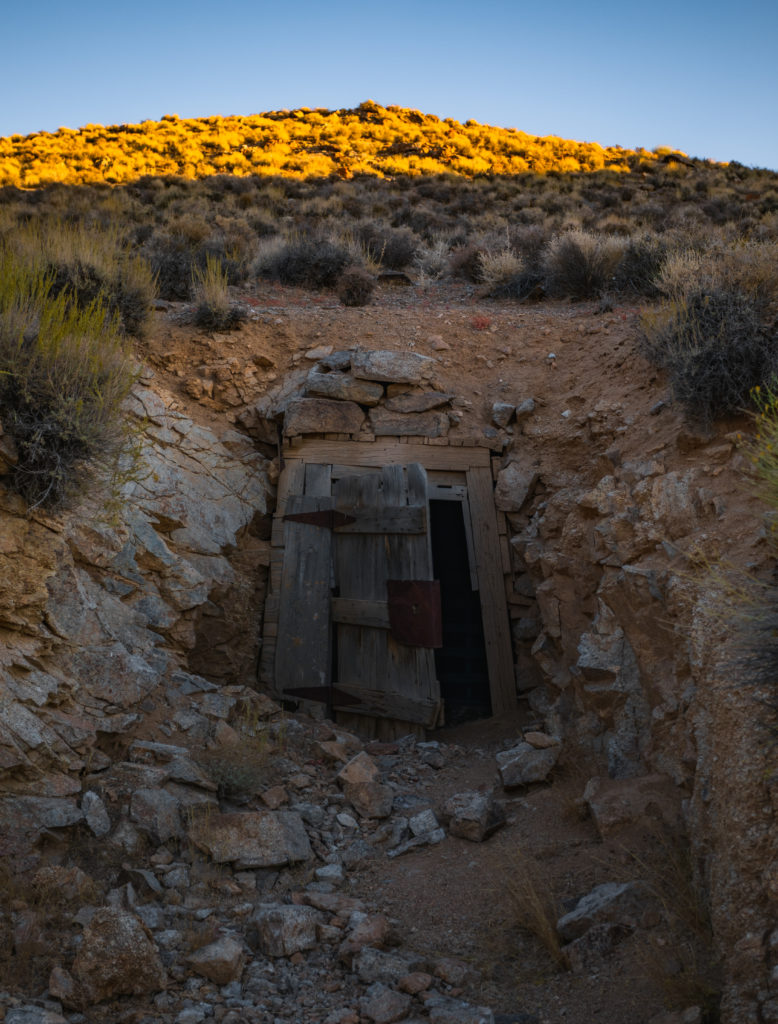
Ashford Mill Ruins
The Ashford Mill was used in 1914 to process gold ore that arrived from the Golden Treasure Mine 5 miles away. Along with a jaw-crusher, the mill included a ten-foot Lane mill, a Wilfley table, and a Diester slime table. According to the NPS, rumor has it that the Ashford brothers sold the area to a Hungarian investor for $50,000. He then turned around and sold it to a rich businessman from LA for double the price.
Visiting Today: All that remains today is the crumbling walls of an office building and the concrete foundations of the mill ruins. Find Ashford Mills 29 miles west of Shoshone via CA-178.

Be sure to check out my Death Valley archive here for more first-hand tips for exploring!
Before heading into historic places, it’s imperative that you’re familiar with the “Leave No Trace” principles.
Read More: Leave No Trace: The 7 Rules of the Backcountry
Learn more about Leave No Trace on their website here.
Like This Post? Pin It!
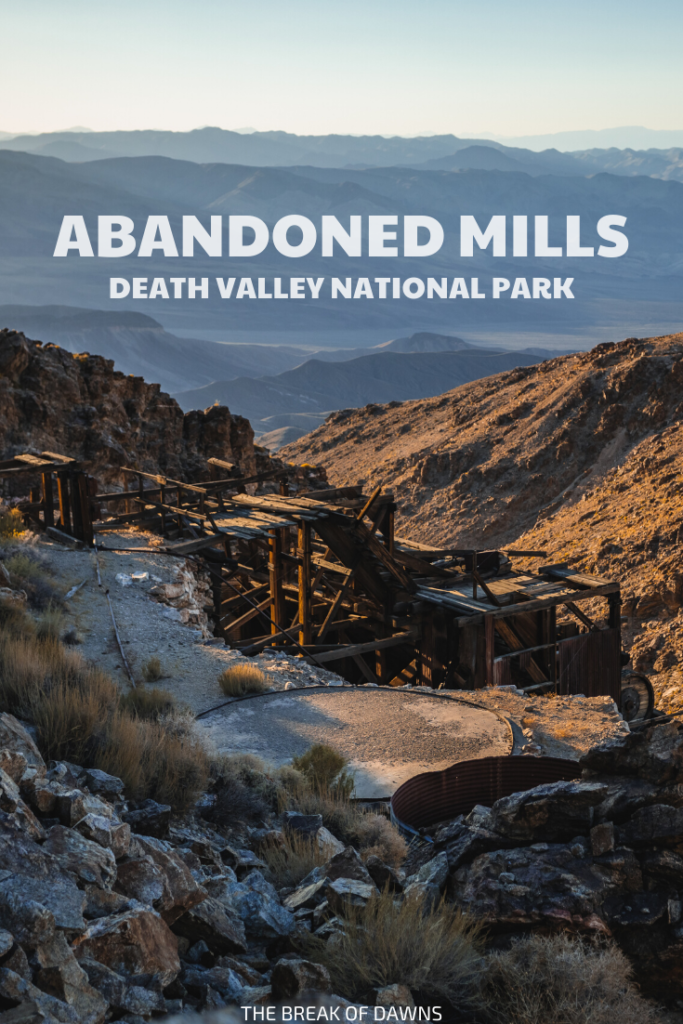
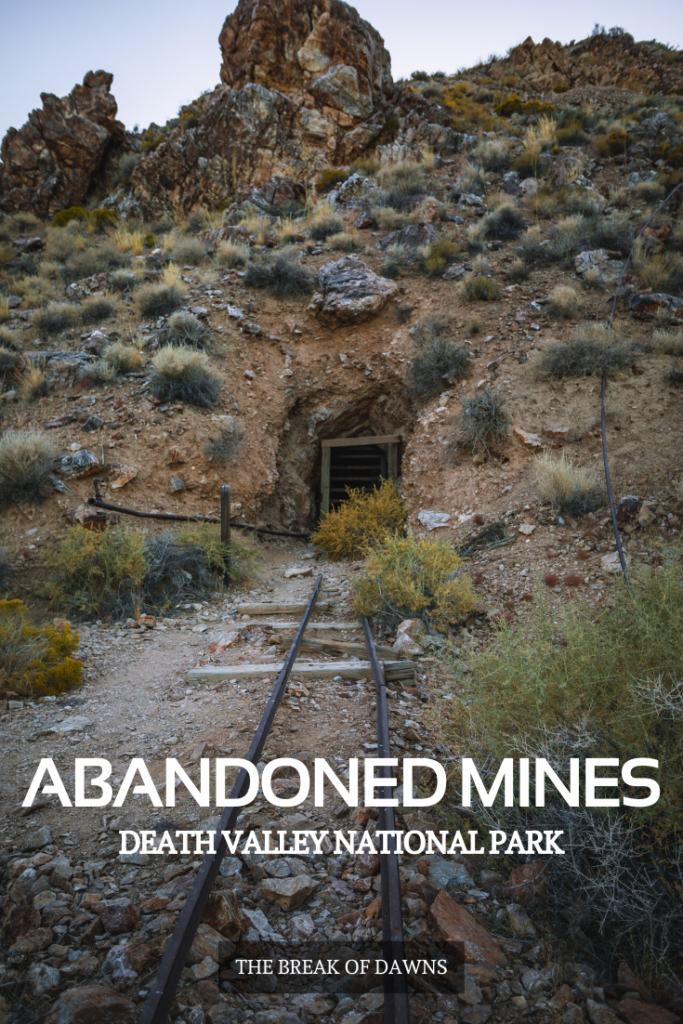
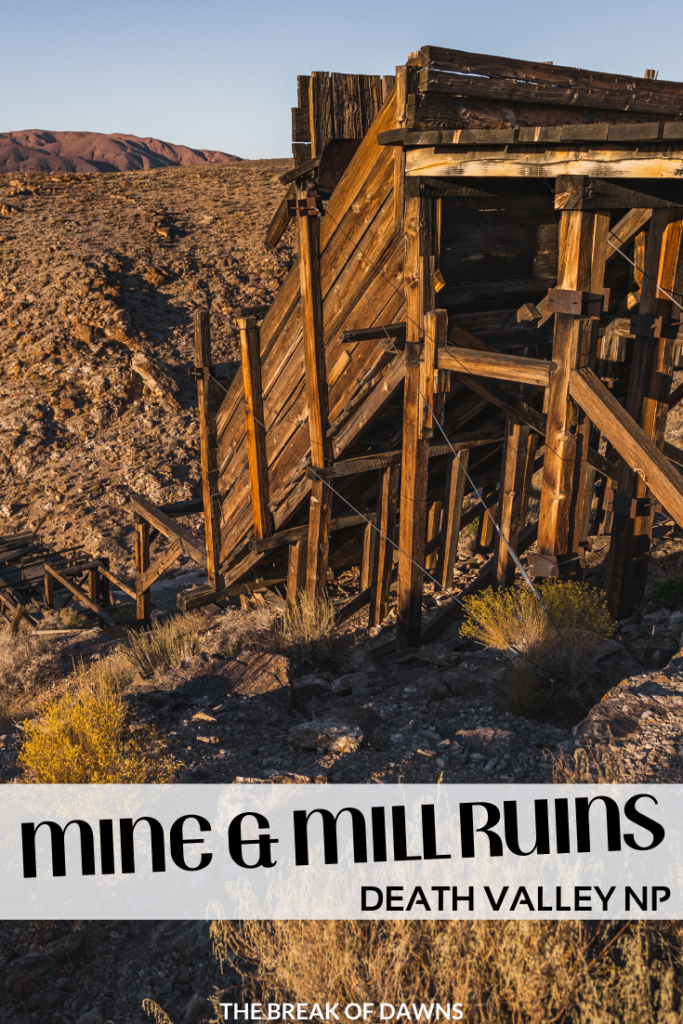

| This post contains affiliate links. At no extra cost to you, if you purchase one of these products I may receive a small commission. This helps me maintain my blog as a free space to you. Check out my Disclaimer for more info.

